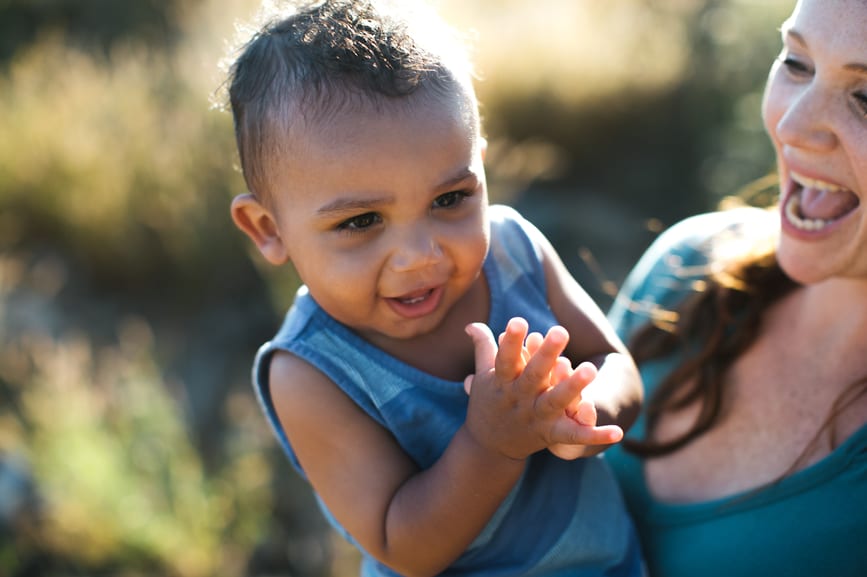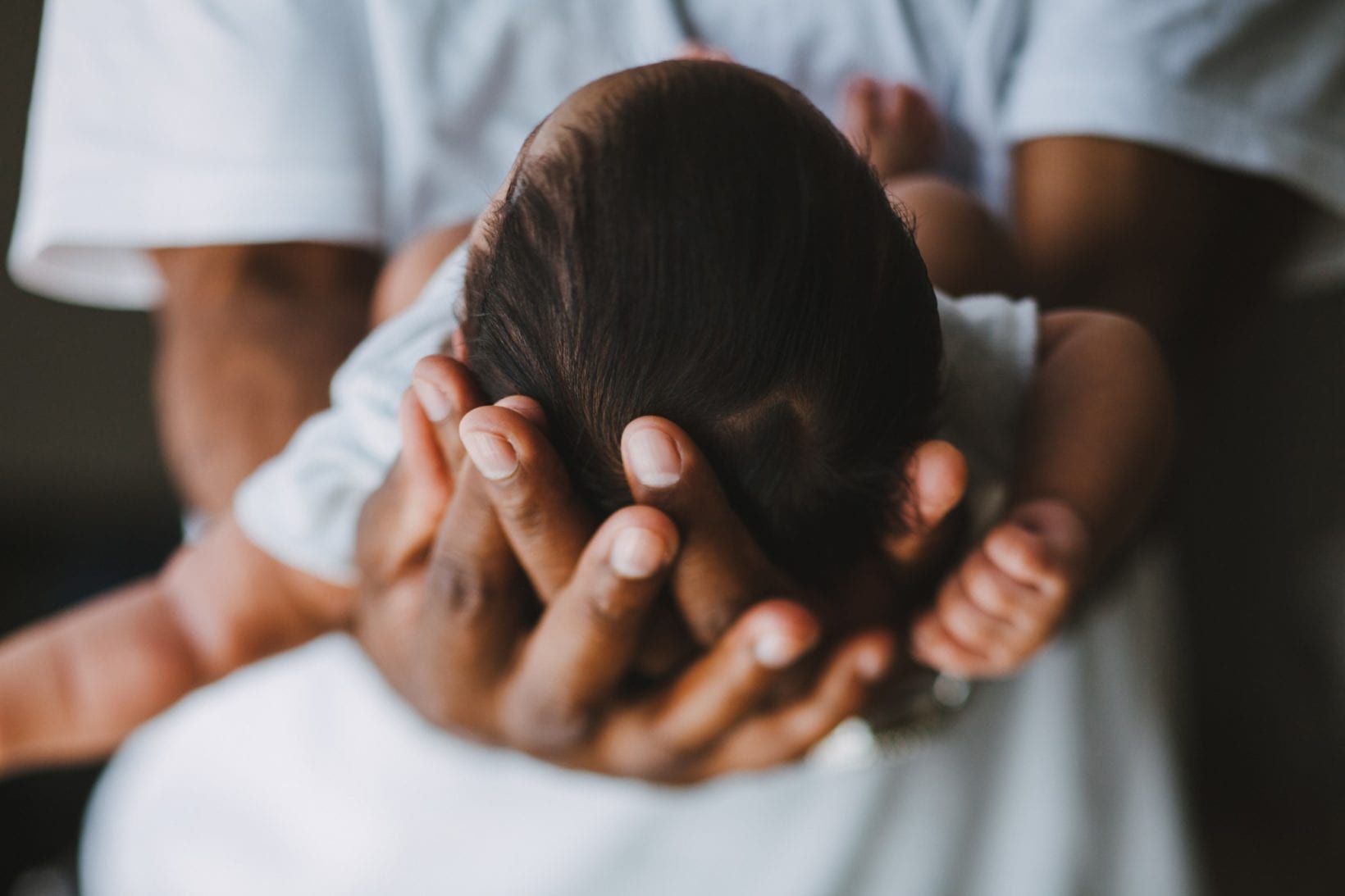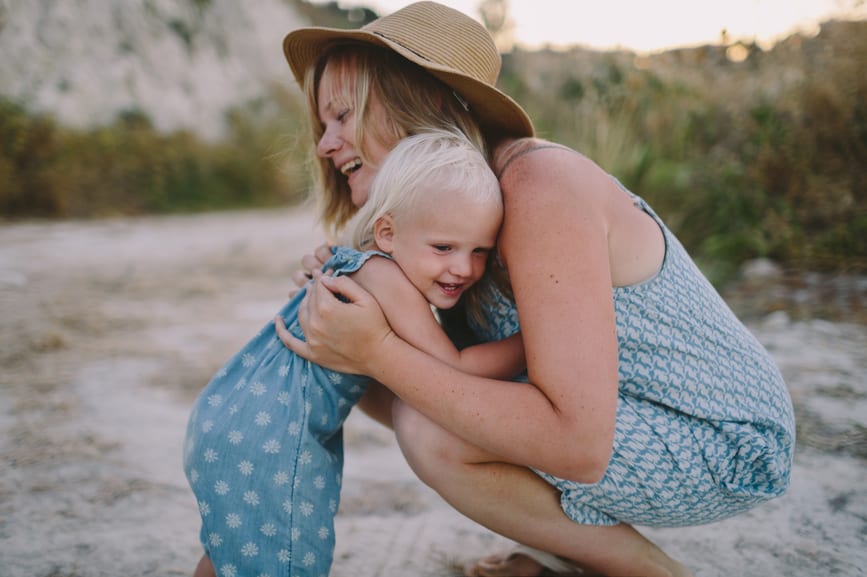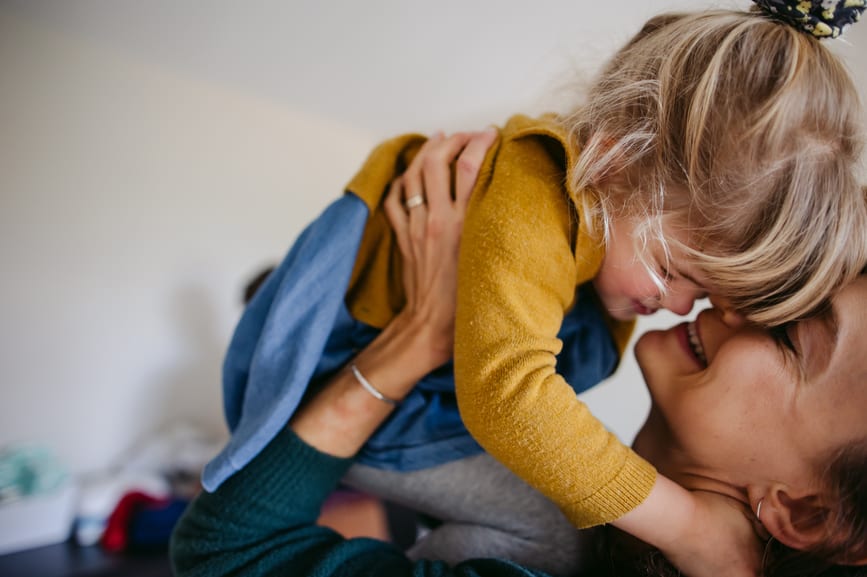Did you know that the best predictor for how any child turns out – in terms of mental and emotional health – is whether or not they developed a secure attachment with at least one person?
Children with a secure attachment are more likely to develop:
- A greater sense of self-agency
- Better emotional regulation
- Higher self-esteem
- Better coping under stress
- More positive engagement in the preschool peer group
- Closer friendships in middle childhood
- Better coordination of friendships and social groups in adolescence
- More trusting, non-hostile romantic relationships in adulthood
- Greater social competence
- More leadership qualities
- Happier and better relationships with parents and siblings
- Greater trust in life
- Greater curiosity, self-reliance, and independence
- Greater resilience and competence as adults
Sounds pretty amazing doesn’t it? Aren’t these the traits and skills all parents hope their children will develop?
So, what is a secure attachment? Why is it so powerful? And how do we make sure our kids develop a secure attachment?
These are all the questions I’ve asked myself and I’m excited to share what I’ve learned here, because as parents, helping our children develop a secure attachment is the single most important thing we can do. It is the WHY behind all we do as conscious, gentle, positive, natural parents.
And the good news is….it’s very forgiving. Parenting through attachment allows for mess-ups and missteps. It’s about parenting through relationship, not a set of strategies.
We don’t need to be perfect parents (there is no such thing) and we certainly don’t need to follow a set of prescriptive rules.
In this post we’re going to cover
- What is secure attachment?
- What is attachment theory?
- Can the strength of attachment be measured?
- What are the four attachment styles?
- Why do humans need secure attachment?
- How is secure attachment formed?
- Is attachment parenting the same as parenting for attachment?
- What has the greatest influence on developing a secure attachment?
- Can my child develop a secure attachment if I didn’t have one?
- Do I need to be a ‘perfect’ parent for my child to develop a secure attachment?
- How can I ensure my child develops a secure attachment?
So, let’s dive in. Here is everything you need to know about secure attachment.

What is secure attachment?
In its simplest form, attachment describes the quality of the relationship, initiated by the baby with her primary caregiver. It is an emotional bond that develops in response to the primary caregiver’s ability to read and respond to the baby’s verbal and non-verbal cues reasonably, consistently and predictably over time.
The caregiver needs to be aware of their child’s cues and respond by meeting their needs. This ability to tune into our baby’s needs is often referred to as attunement.
In the 1940’s, John Bowlby, the father of attachment theory, defined attachment as a “lasting psychological connectedness between human beings.”
More recently, Dr. Alan Sroufe, Professor of Child Psychology at the Institute of Child Development described attachment as:
“A relationship in the service of a baby’s emotion regulation and exploration. It is the deep, abiding confidence a baby has in the availability and responsiveness of the caregiver.”
Further, Dr. Gordon Neufeld describes the essence of attachment as…
“…that drive or relationship chartacterised by the pursuit and preservation of proximity.”
And Dr. Gabor Maté as…
“Attachment is a biological drive for connection to another human being. It’s an essential drive because without it we can’t survive.”
Every single human being develops an attachment style, regardless of the quality of caregiving they receive. The way that caregivers respond to a baby’s attachment cues forms an attachment style in the baby’s mind.
Attachment is not a tree-hugger, hippy-dippy parenting philosophy. In fact, it isn’t a philosophy at all. It is just life.
Dr. Vanessa Lapointe
What is attachment theory?
In the 1930’s British psychiatrist and psychoanalyst John Bowlby, the father of attachment theory, worked in a Child Guidance Clinic where he treated many emotionally disturbed children.
His experience inspired him to consider the impact of a young child’s relationship with his/her mother in terms of their social, emotional and cognitive development. It was from this work that Bowlby formulated his attachment theory.
His attachment theory was also influenced by observations of the ways in which other mammals care for their young. Ground-dwelling mammals like foxes or beavers, for example, run to a place of protection when frightened. Whereas our closest relatives – chimpanzees and gorillas – run to a protective adult.
As Bowlby focused on the developmental significance of this survival pattern, he concluded that humans are wired like their primate cousins to form deep emotional attachments.
A secure attachment serves at least three primary functions:
- Providing a sense of safety and security
- Regulating emotions, by soothing distress, promoting joy and fostering a sense of calm
- Offering a reliable base from which to explore
According to Bowlby, the most important factor in determining a child’s attachment quality was;
“the extent to which the [caregiver] has permitted clinging and following, and all the behaviour associated with them, or has refused them”.

Can the strength of attachment be measured?
In 1969, psychologist Mary Ainsworth, a colleague of John Bowlby, devised an assessment technique called the Strange Situation Classification (SSC) to investigate how attachments differ between children.
From her research, Ainsworth found that there were three attachment styles; secure, insecure-avoidant and insecure ambivalent-resistant. She concluded that attachment styles were the result of early interactions between mother and child. Later, a fourth attachment style was also recognised; disorganized attachment.
What are the four attachment styles?
Let’s unpack each of these four attachment styles.
Secure attachment
Securely attached children feel confident that their caregiver is available to reliably co-regulate their emotions, acknowledge and meet their needs, and act as a safe home base so that they can explore their environment while returning to their caregiver in times of need.
Parents who are securely attached to their babies are responsive, warm, and emotionally available. Babies who are securely attached are usually distressed when separated from their caregiver and joyful when their caregiver returns.
Insecure-avoidant attachment
Babies in insecure-avoidant attachment relationships may seem indifferent towards their caregiver, act as though they are unstressed when she leaves the room and may exhibit the same behaviours with a stranger. When reunited the baby may avoid her mother.
One study showed that insecurely attached babies are just as physiologically upset (i.e. increased heart rates) as securely attached babies when their parents leave but have learned to suppress their emotions in order to stay close to the parent without risking rejection.
As these children grow, avoidance and emotional distance may become a way of dealing with the world, and instead of problem-solving, they are more likely to sulk or withdraw.
Insecure ambivalent/resistant attachment
Babies in an insecure-ambivalent/resistant attachment relationship are overly clingy with their caregiver and tend not to explore in her presence. They’re distressed when their mother leaves, and when she returns, they seesaw between clinging and resistance.
This pattern of attachment also undermines autonomy, because the baby stays focused on the mother’s behaviour to the exclusion of nearly everything else. Separation anxiety tends to last longer in these babies compared to securely attached babies. Longitudinal studies show that these children often become inhibited, withdrawn, and unassertive, and they develop poor interpersonal skills.
Disorganised attachment
Disorganised attachment is rare and generally only seen in extremely negative circumstances, occurring in families where there is abuse or mistreatment; the mother, who is supposed to be a source of support, is also the person who frightens the child.
In her research, Mary Main described disorganised attachment stemming from, “The infant [being] presented with an irresolvable paradox wherein the haven of safety is at once the source of alarm.” Babies with a disorganised attachment may seem dissociated even when held by their mother. These children tend to become controlling and aggressive, and dissociation remains a preferred defence mechanism.

Why do humans need secure attachment?
Babies are born with only 25% of their brain development. It isn’t until our late 20’s that our brains are fully developed. Throughout childhood, key relationships literally shape the way our children’s brains are wired…for life.
Early attachment style has a dramatic and long term impact on mental and emotional health and the way our children view and interact with others. It gives them a blueprint for what to expect (and accept) from future relationships.
During the first three years of life – when brain development is most rapid and malleable – parents can have the greatest influence on creating a secure attachment and helping our children build healthy brains.
Forming healthy attachments with our caregivers is a survival strategy. The more secure that attachment is the more likely it is that we will not only survive but thrive. Secure attachment is a need, not a luxury or a parenting style.
Psychologists such as Edward Tronick, Bruce Perry, Megan Gunnar, and Daniel Siegel have amassed a large body of evidence-based science irrefutably linking attachment to healthy child development. In fact, attachment may be more essential than food in terms of a young child’s hierarchy of needs. What this research tells us is that children need to be seen, heard, and responded to by someone who loves them in order to thrive.
Dr. Vanessa Lapointe

How is secure attachment formed?
When an infant’s primary caregiver repeatedly responds to her infant’s cues in a nurturing and positive way, neurochemicals are released that build and reinforce neurological pathways in the brain and body that lead to self-regulation (such as the ability to self-calm), a sense of safety in the world, the ability to later engage in healthy relationships, and in general, the social-emotional well-being of the child.
As our children grow if we can ensure that our children feel safe, seen, soothed, valued, and supported we are giving them the best chance possible to develop a secure attachment.
Circle of Security International teaches that providing secure attachment is about simultaneously providing a secure base and a safe haven. The secure base provides children with the courage to explore the world, and promotes curiosity. The safe haven provides children with protection, comfort, delight and emotional coregulation.
Nurturing responsiveness leads to a secure attachment, which is central to the ability of the developing child to learn how to cope with stressful situations in the future. This is the foundation for resilience, independence, and mental wellness.

Is Attachment Parenting the same as secure attachment?
Dr Sears and his wife Martha Sears popularized attachment parenting in the early 1980’s. As a new parents I remember learning about Dr. Sears, the Baby B’s and the attachment parenting movement.
Intuitively, this approach immediately made sense to me. Afterall, we’re social mammals – we’re designed to breastfeed, to keep our babies close and to be responsive. Our closest primate cousins sleep next to their young. I couldn’t imagine our ancestors putting their babies in a separate cave as they slept at night.
So, from the moment he was born – in spite of the warnings on the wall of our hospital room – our son slept next to us in our family bed…and still does seven years later.
We followed many attachment parenting principles – from bedsharing to breastfeeding and babywearing. The Seven Baby B’s are:
- Birth
- Bonding
- Breastfeeding
- Babywearing
- Beware of baby trainers
- Bedding close to baby
- Belief in baby’s communication
These have now been modernized and elaborated by Attachment Parenting International into Eight Principles of Attachment.
Attachment parenting principles can provide wonderful guideposts on your journey to attachment.
But, here’s the thing…the longer I’ve been a mother the more my appreciation grows for the individual challenges we face as parents and for the emotional risks associated with unfulfilled expectations – especially for women.
This is the truth: Following attachment parenting principles and practices can be wonderful to help to foster a secure attachment, but it’s not the most important factor.
The most important factor is intention (or your why behind your choices and actions): secure attachment is dependent on a commitment to a certain type of relationship. It is dependent on responsiveness, attunement and unconditional love.
While the Baby B’s and The Eight Principles of Attachment Parenting are incredibly useful tools for parenting for a secure attachment and mental wellness, it is important to note that attachment parenting is not the same as parenting for a secure attachment.
What has the greatest influence on developing secure attachment?
The greatest influence on the quality of the attachment relationship is caregiver sensitivity; how well we attune to our babies, how accurately we understand our child’s needs, how quickly we respond to those needs and most importantly, how willing we are to align with our children.
Can my child develop a secure attachment if I didn’t have one?
The research shows that history repeats itself unless we consciously make a change.
Researchers found that they could predict with 90% certainty, the attachment style of babies of pregnant women based on the new mother’s attachment history.
40% of adults did not have secure attachment with our own caregivers – we developed a form insecure attachment. Here comes the good news. Dr. Dan Siegel and Tina Payne Bryson report that:
History is not destiny when it comes to attachment. The single best predictor for how well a parent is able to provide secure attachment to their children is not whether they had it with their own parents. It’s whether they have reflected on their attachment experiences growing up with their own caregivers and made sense of those experiences.
Dr. Dan Siegel and Dr. Tina Payne Bryson
It is time to consciously choose our own family’s story. To create conditions for our kids to develop a secure attachment, whether we experienced secure attachment ourselves or not. And more good news – it is never too late to rewrite our own stories: to change our own attachment styles to be more secure.
Do I need to be a ‘perfect parent’ for my child to develop a secure attachment?
Absolutely not!
Parenting through attachment provides parents with a whole lot of wiggle room! It is very forgiving of our mess ups and the moments we’d like to do-over.
Donald Winnicott, Paediatrician and parent-infant therapist, coined the term “good enough mother” in 1953 after observing thousands of babies and their mothers. He came to realize that babies and children actually benefit when their mothers “fail” them in manageable ways. He concluded that parents respond to their babies and children approximately 70% of the time.
Later, Dr. Ed Tronick found in his research that parents and babies/children are in sync (attuned) only around 20 to 30% of the time.
So, when you don’t get it right the first time, repair and find attunement again.
There is no such thing as a perfect parent. But there are perfect systems within nature…and that’s what parenting through attachment provides us with. A perfect system that is predicated on the idea that we’re imperfect human beings.
When we break our connection with our kids – when we yell, lose our cool or mess up – we can repair. There is a huge amount of opportunity in the power of rupture and repair within relationships. It helps teach kids that relationships can be messy and that the whole spectrum of human emotions are accepted.
Being a “good enough mother [parent]” is about being real and being open to connection with our kids – good enough parenting can still lead to secure attachment.
The more sensitive the caregiver is towards the child’s needs, the more secure the child’s relationship with that caregiver will be.
Rachel Samsom
How can I ensure my child develops a secure attachment?
I titled this post Everything You Need to Know about Secure Attachment but here we are 2000 words later and we haven’t even begun to scratch the surface! So, if you’d like to learn more about secure attachment, check out my new course The Attached Child. You can learn more here.
I’m passionate about this topic and believe that parenting through attachment is not only what our kids need but also what we need as adults. Parenting through attachment is magical, it helps relationships flow, it brings ease and harmony to our days.
Secure attachment allows our children to unfold into their true potential. As Dr. Deborah MacNamara said, “When children can take us for granted, they can leap into new surroundings of their own making. They are free to discover new places knowing there is always a home to return to. We all need to feel anchored and relationships are the things that hold us in place.”
“Intimate attachments to other human beings are the hub around which a person’s life revolved, not only as an infant or a toddler or a schoolchild, but throughout adolescence and years of maturity as well, and on into old age. From these intimate attachments a person draws strength and enjoyment of life and, through what he or she contributes, gives strength and enjoyment to others. These are matters about which current science and traditional wisdom are at one.” John Bowlby

Comments